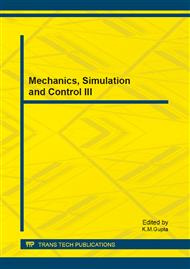[1]
J.H. Braun, Titanium Dioxide-A Review, J. Coating. Technology. 69 (868), 59-72, (1997).
Google Scholar
[2]
I.M.L. Chew and D.C.Y. Foo, Automated targeting for inter-plant water integration, Chemical Engineering Journal, 153, 23-36, (2009).
DOI: 10.1016/j.cej.2009.05.026
Google Scholar
[3]
J. Jezowski, Review of water network design methods with literature annotations, Industrial & Engineering Chemistry Research, 49 (10), 4475-4516, (2010).
DOI: 10.1021/ie901632w
Google Scholar
[4]
Y.P. Wang and R. Smith, Wastewater minimization with flowrate constraints, Chemical Engineering Research & Design, 73 (A8), 889-904, (1995).
Google Scholar
[5]
X. Feng and W.D. Seider, A new structure and design methodology for water networks, Industrial & Engineering Chemistry Research, 40, 6140-6146, (2001).
DOI: 10.1021/ie000835i
Google Scholar
[6]
N. Takama, T. Kuriyama, K. Shiroko, T. Umeda, Optimal water allocation in a petroleum refinery, Computers & Chemical Engineering, 4, 251-258, (1980).
DOI: 10.1016/0098-1354(80)85005-8
Google Scholar
[7]
G. Poplewski, K. Walczyk, J. Jezowski, Optimization-based method for calculating water networks with user specified characteristics, Chemical Engineering Research & Design, 88 (1A), 109-120, (2010).
DOI: 10.1016/j.cherd.2009.07.012
Google Scholar
[8]
J. Jacob, H. Kaipe, F. Couderc, J. Paris, Water Network Analysis in Pulp and Paper Processes by Pinch And Linear Programming Techniques, Chemical Engineering Communications, 189 (2), 184-206, (2002).
DOI: 10.1080/00986440211836
Google Scholar
[9]
A.P.R. Koppol, M.J. Bagajewicz, B.J. Dericks, M.J. Savelski, On zero water discharge solutions in the process industry, Advances in Environmental Research, 8 (2), 151-171, (2003).
DOI: 10.1016/s1093-0191(02)00130-2
Google Scholar
[10]
J.G. Mann, Cultural changes and water-asset realignment to support water-reuse projects, Resource Conservation and Recycling, 37, 175-180, (2003).
DOI: 10.1016/s0921-3449(02)00097-6
Google Scholar
[11]
X. Feng, N. Wang, E. Chen, Water system integration in a catalyst plant, Chemical Engineering Research & Design, 84 (A8), 645-651, (2006).
DOI: 10.1205/cherd.05191
Google Scholar
[12]
D.K.S. Ng, Automated targeting for the synthesis of an integrated biorefinery, Chemical Engineering Journal, 162, 67-74, (2010).
Google Scholar
[13]
P. Oliver, R. Rodriguez, S. Udaquiola, Water use optimization in batch process industries. Part 1: design of the water network, Journal of Cleaner Production, 16 (12), 1275-1286, (2008).
DOI: 10.1016/j.jclepro.2007.06.012
Google Scholar


